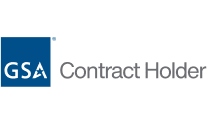Unfortunately, workplace accidents occur all too frequently and have a significant impact, with more than two million workers per year sustaining injuries so severe that they are unable return to their jobs and require ongoing medical care. As an employer or manager, it is essential to ensure your employees are kept safe from any dangers.
Promoting active participation in safety protocols is essential to the prevention of workplace accidents. The following five best practices outlined below can be implemented in the workplace to ensure maximum safety:
Avoiding Shortcuts & Negligence:
While it is understandable to want to complete tasks quickly, it is important not to overlook safety protocols. It is crucial to follow instructions and remain aware of one’s surroundings. Any uncertainties or confusion must be addressed before starting any work.
Safety In Transit:
According to the Bureau of Labor Statistics, In 2021, there were 1,982 transportation fatalities – 1,253 were related to roadway incidents and 201 were from non-roadway incidents involving a motorized vehicle, while 337 were pedestrian-related. As roadways are open environments, employers can safeguard their workers by:
- Establishing and enforcing safe driver policies
- Managing their fleet through a structured maintenance program
- Providing training to workers operating specialized vehicles/equipment
- Verifying workers possess valid driver’s licenses according to the vehicle classification
- Implementing a safety inspection checklist as part of their daily routine
- Mandating the use of seatbelts














